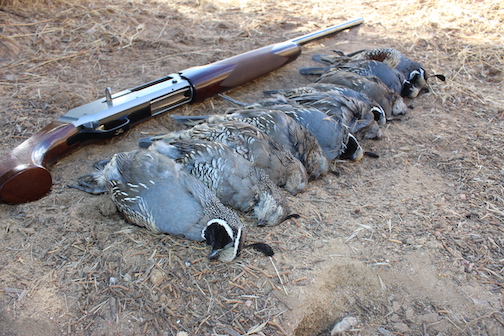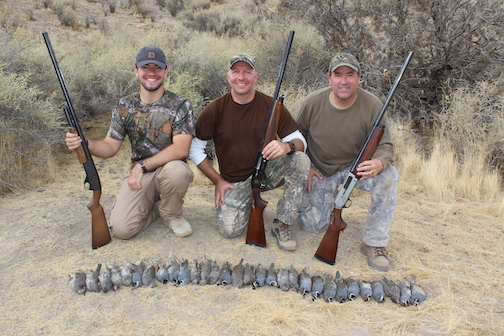
BY TIM E. HOVEY
I shot my first quail when I was thirteen. We were living in central California back then. Our house sat on one acre, with our neighbor’s place stretching out over 100-acres. One day he spotted me plinking with my BB-gun and told me I should hunt his place looking for game birds.
The following morning, I was out early walking the property and listening for the tell-tale call of a quail covey. I snuck up on a huge brush pile and heard birds scurrying around inside. I waited and surprised two birds that had decided to venture outside the safety of their cover. I remember walking home with my two birds, very proud that I had brought meat home. Every time I head out for quail, I think about that early morning hunt, and the kind neighbor that allowed me access.
With the first mourning dove season behind us, many wing shooters are likely looking forward to the upcoming upland bird season. With the amazing rain year California has experienced over the last twelve months, this year should be a banner one for quail.
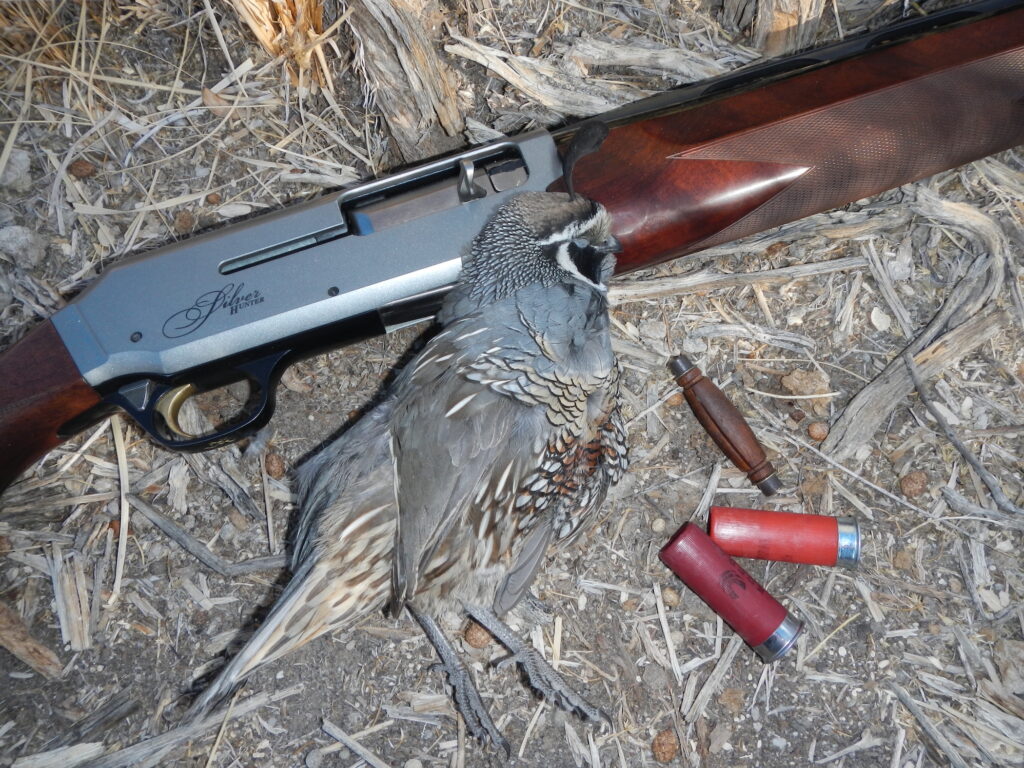
California splits up its quail season into three zones, and those zones have different opening dates, with a majority of the state opening up on October 21 to January 28. The bag limit remains at ten birds and of course, non-lead ammo is required during your hunt.
Prior to every season, I make sure I do two things to prepare for hiking the hills for quail; I do my fair share of scouting and I spend a few days practicing my wing shooting.
Getting out before the season and seeing where the birds are holding is a priority for me and my hunting group. Spending time in the field prior to the opener will pay dividends at the beginning of the season. We check out our hotspots and determine the abundance of birds in the area. We also make sure we try and find new areas to hunt that hold birds. While quail do predictably congregate near a water source, they will move around when new food items are located.
Finding a reliable water source and good cover from predators close by will be an attractive place for quail. Look for prints in the mud around water and see if you can locate an area birds use for dusting themselves. These areas are places where quail dust themselves with fine silt to combat parasites. These are popular areas with upland birds and the spot will be covered with bird prints. If you find a dusting area in close association water and cover, I’d make sure I was there the first thing on opening morning.
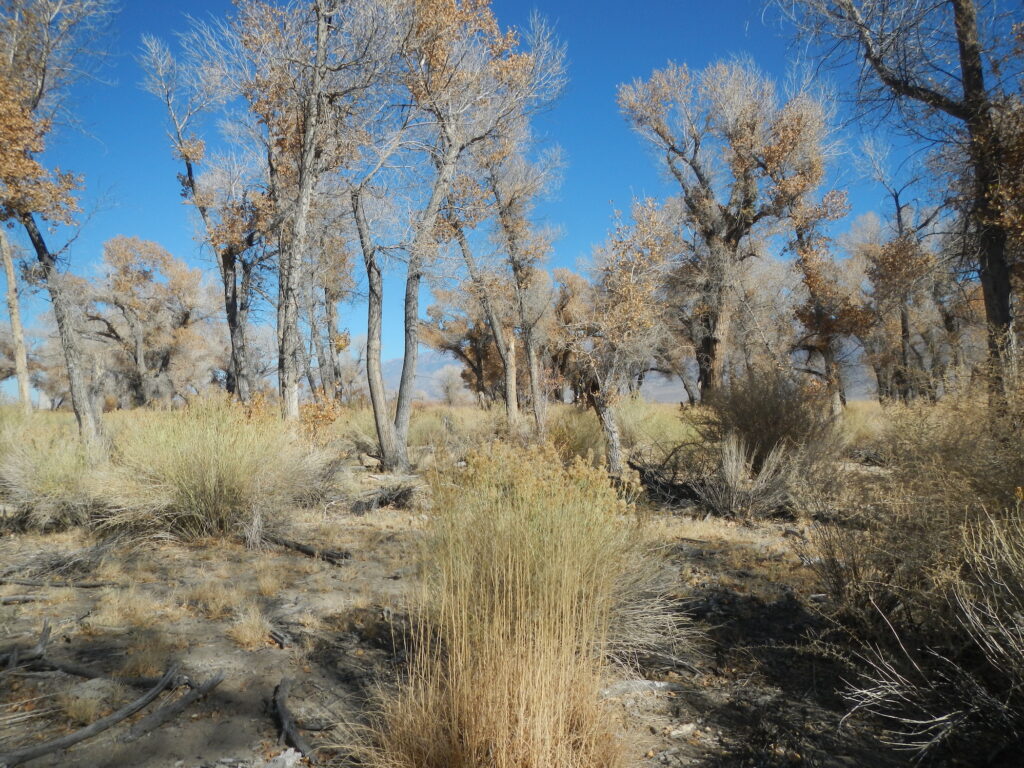
Even with a few mourning dove trips under your belt, it’s important to get in some practice for hunting quail. Mourning dove are fast, maneuverable and can be encountered coming in from every direction. For the most part, a flushing quail covey will fly out and away from an approaching hunter. They are chubby, ground birds that usually fly low to the ground and in a straight line. Fortunately, there is a fun, cheap and easy way to sharpen your shooting skills for this type of flight.
For decades now, I’ve been honing my shooting skills on flying targets before the upland season by grabbing a box of clay pigeons and heading to the desert. Using a hand thrower and tossing the clay targets low and out front, shooters can get used to hitting moving targets that are consistently flying just like flushing quail. Spend a little extra time testing your lead and aim on clay targets, and you’ll put more birds in your bag during the season.
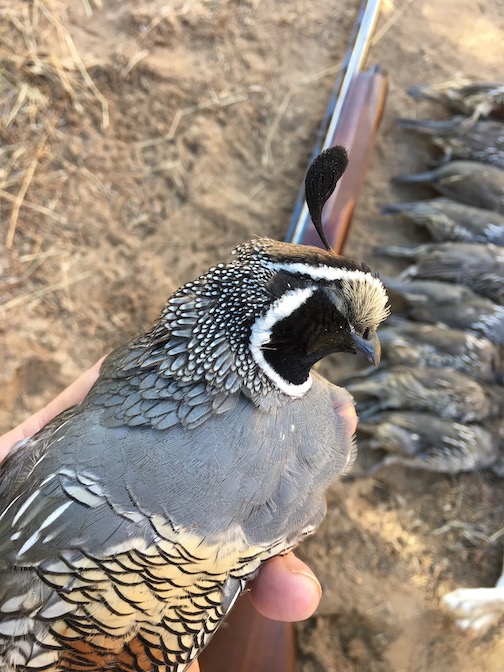
HEALTHY MALE – This male quail was taken during an opening day hunt. Quail are easily located if you know what to look for. TIM E. HOVEY PHOTO
During the unexpected, often explosive flush of a covey of quail, things can get hectic. New hunters will often shoot too quickly, usually resulting in a miss. A tip that helped me when I first started, was actually saying the words YOU-HAVE-TIME before I track and fire at flushing birds. This simple trick, which I’ve been using for over 30-years, helps calm me in the moment and better focuses my shot.
In my opinion, quail are one of the best-tasting game birds out there. They have a mild, unique flavor and can be served in a variety of ways. I like to breast out the bird and marinate it in a mix of olive oil and garlic seasoning overnight. I poke small holes in the breast meat so the marinade will soak in. I then pan-fry them until golden brown and serve as a side dish.
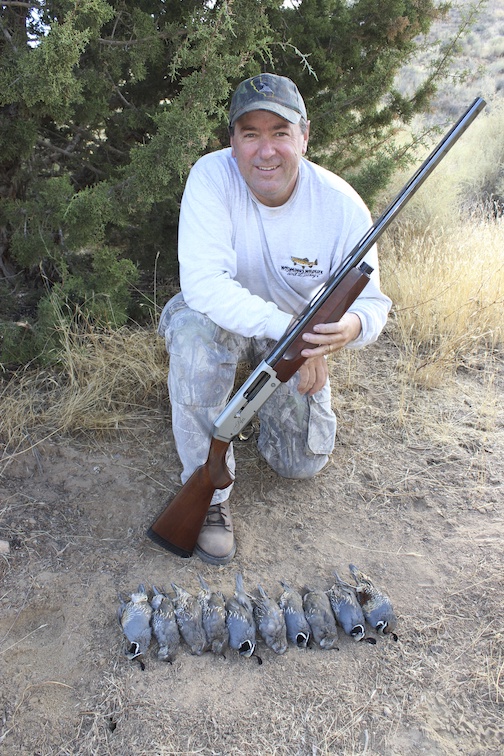
Hunting quail is easy to do and during promising years like the one we’ve just had; they will be abundant in the areas they inhabit. They have a unique call and can be easily located by savvy hunters if you know what it sounds like. Look for water in quality habitat and get ready. The explosiveness of a flushing covey is one of the most exciting events a bird hunter can experience.
